Alternate Fingerings for Oboe, Explained
If you’ve ever looked at an oboe fingering chart, you may have noticed more than one way to play certain notes. Which one should you use? Well, it depends on the context!
In this article, oboist Anna Betuzzi talks about when, why, and how to use alternate fingerings for specific notes, including F, E-flat, A-flat, and Low B-flat.
If you want to learn even more, check out Reed Supplies Canada's new Fingering Chart.

First, a note about oboe models:
The first factor to consider when determining which alternate fingering of the note to use is your instrument!
Depending on the make and model of your oboe, you may not have all the keys that a professional model instrument will have. Take a look at this diagram, and compare it to your oboe to see if you have a Left F Key, a Forked F Resonance Key (found on the side of your oboe), and/or Low B-flat Keys.
Whether or not you have these specific keys will help determine which alternate fingerings you can or cannot use. But don’t worry, even if you don’t have any of these keys, you will still be able to play every note!

How to play F on the oboe
There are many different ways to play F on the oboe. The fingerings you use will depend on the musical context and whether your oboe has a Left F Key and/or a Forked F Resonance Key.
Regular F
Regular F fingering is the default on the oboe, and it should be used whenever you can. It has the best intonation and provides smooth transitions between F and most other notes on the oboe. It is played like this:
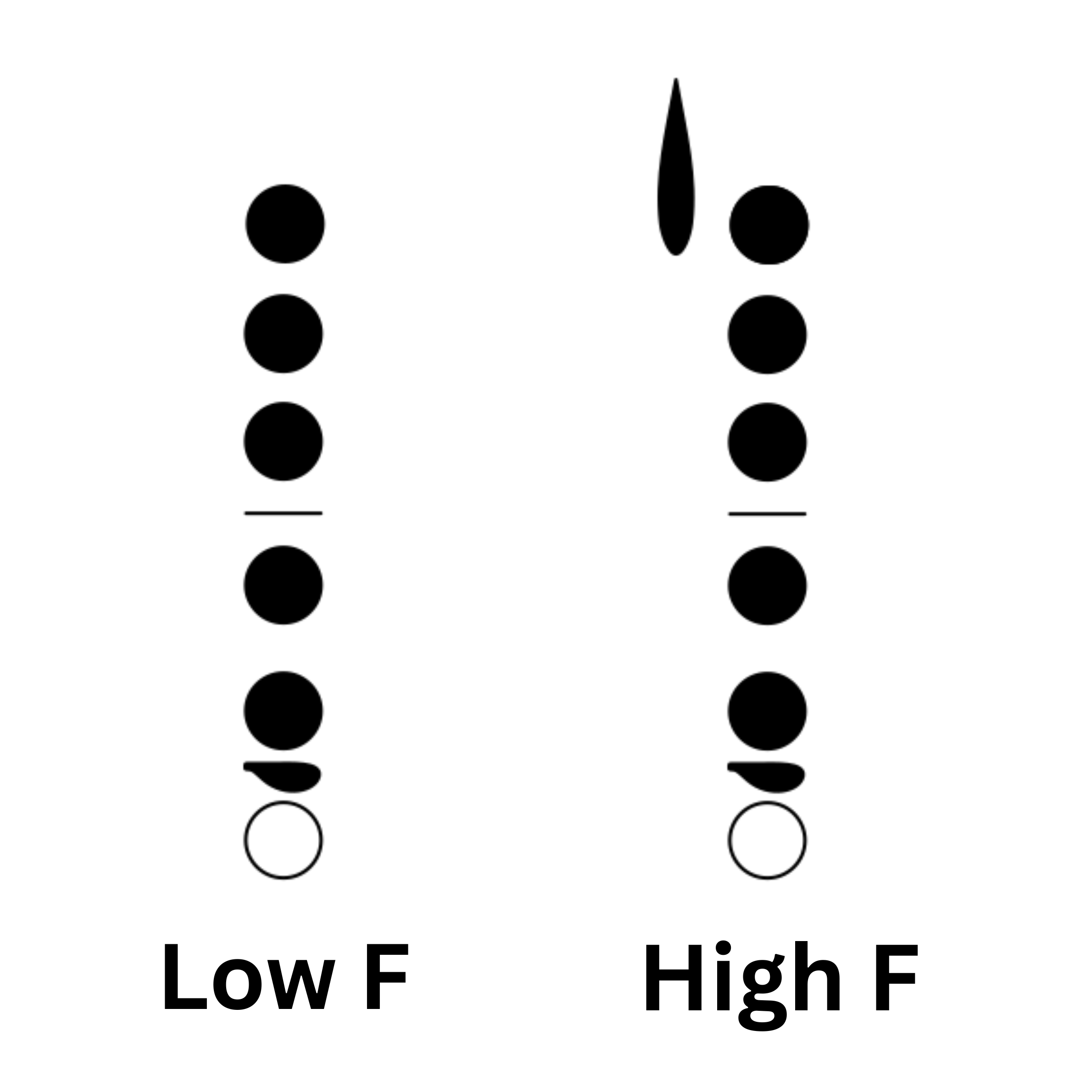
In this musical example, a smooth transition is possible between F and the notes before and after F. Therefore, Regular F should be used:
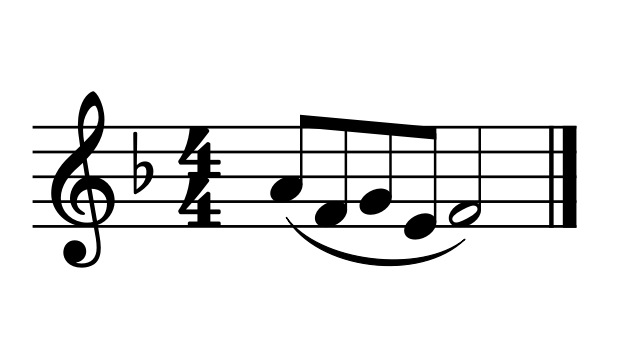
Left F
If your oboe has a Left F Key (see the diagram at the top of this article), you will be able to use Left F as well. It is played like this:
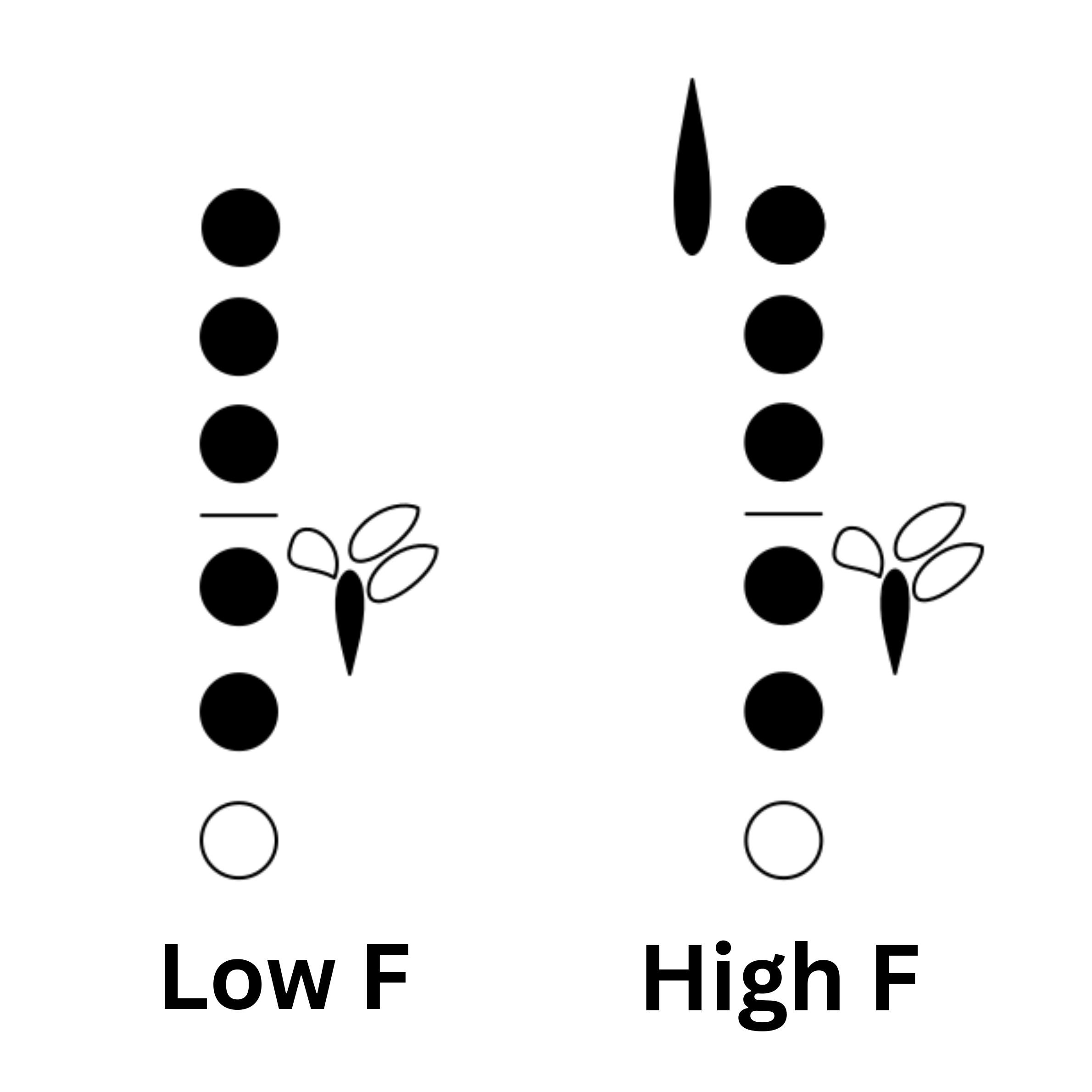
Left F is required whenever there is a D-flat, a D, an E-flat, or a low C right next to an F. Using Left F enables a smooth transition between these notes, as it frees up your right-hand ring finger (which is required for the D-flat, D, and E-flat).
In this musical example, Left F is required. I like to mark the letter L above the note so that I remember to use Left F, and I encourage you to do the same.
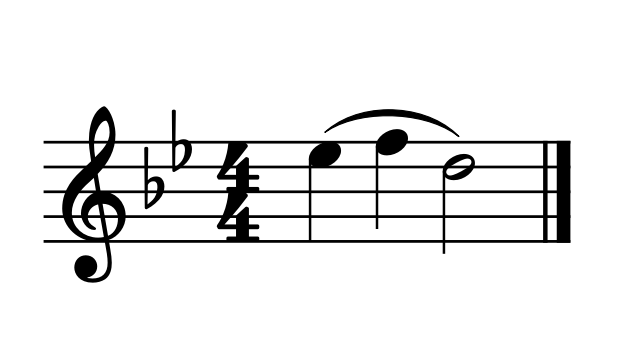
Forked F
If your oboe does not have a Left F key, you will need to use Forked F in its place. There are also some cases where Left F is not possible, so even if you have a Left F key, you will still need to use Forked F sometimes. Here is the regular Forked F fingering:
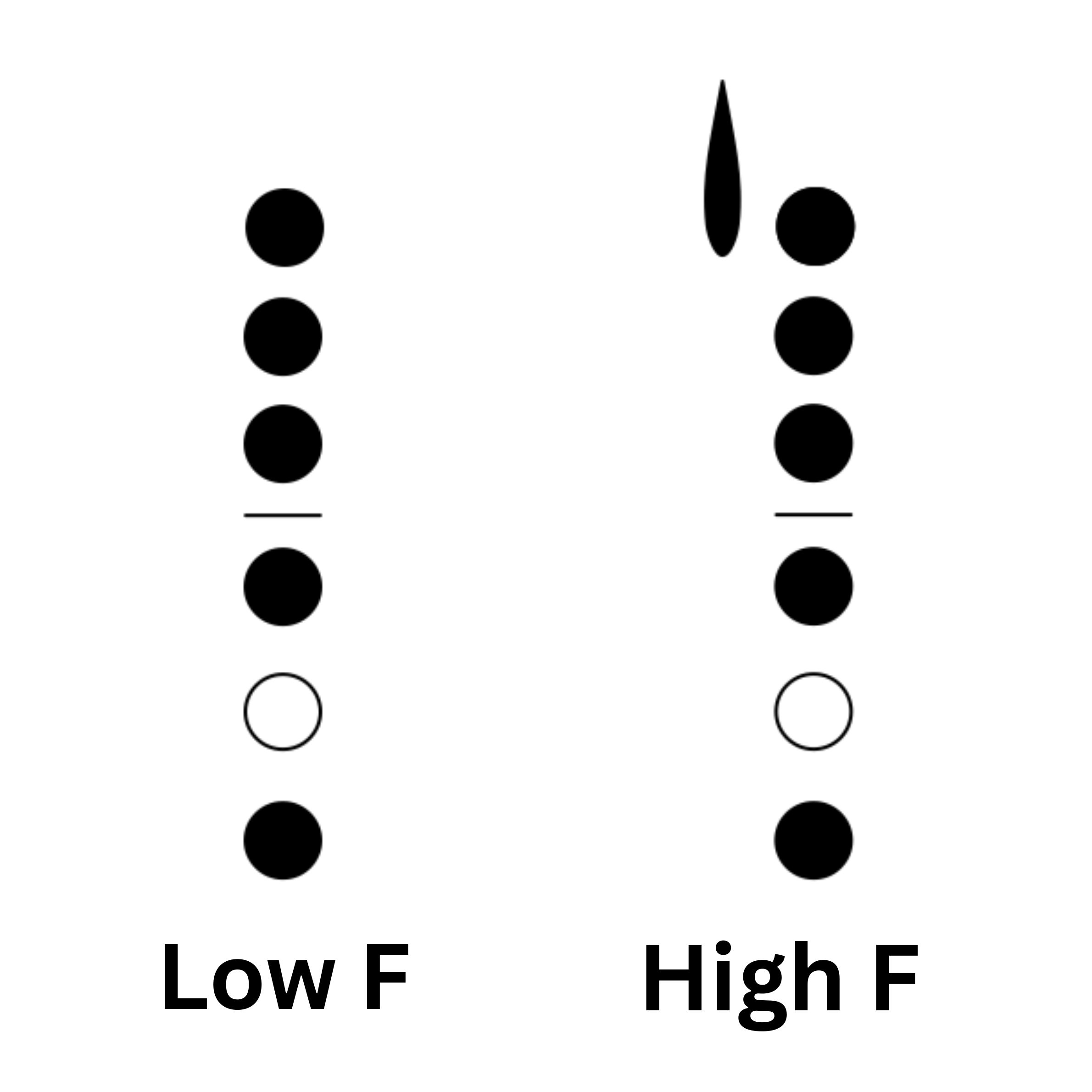
In the following example, you could theoretically use the Left F key to play the F. However, if you don’t have a Left F key, you can use Forked F here instead:
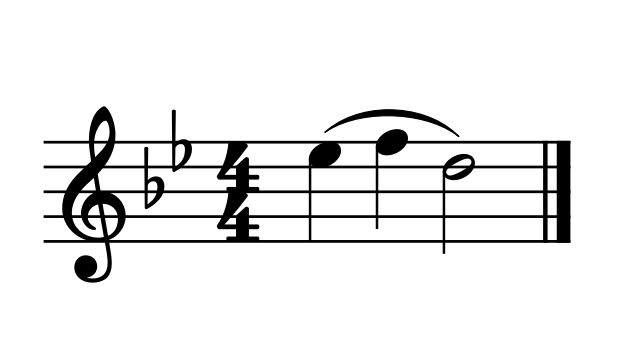
Whether or not you have a Left F key, you will need to use Forked F for the next example below. Playing D-flat next to E-flat requires use of the Left E-flat key (more on Left E-flat next), which therefore requires use of Forked F on the following note.
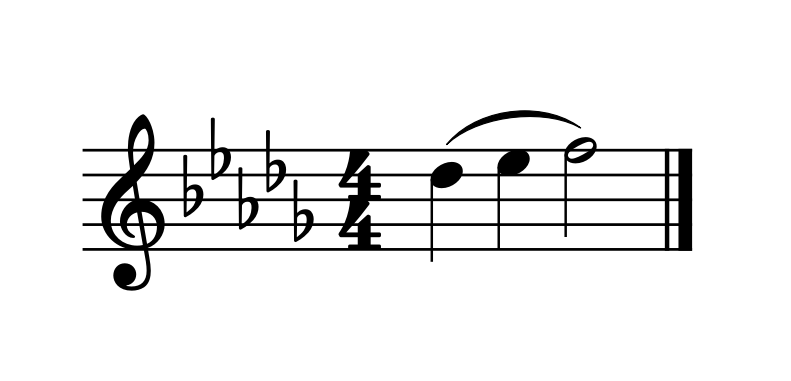
There are several ways of marking the Forked F in your music. Many people will mark the letter X or F to stand for forked. I personally draw a fork/trident, and I have also seen oboists draw a bracket (which looks like the ‘downbow’ symbol that string players use), in order to mimic the shape of the fingers when playing that note. Here’s a drawing of all those options. Try them all and see what clicks for you!

Should I add the E-flat key for Forked F?
The Forked F resonance key is a small key on the side of an oboe that opens automatically whenever a Forked F is played. It was added in order to improve the intonation of Forked F. If your oboe does not have a Forked F Resonance key (see the diagram at the top of this article), you can add your E-flat key in order to improve the intonation. Here are the fingerings you can use for Forked F, if your oboe does not have a Forked F Resonance key:

How to play E-flat on the oboe
There are two different ways to play E-flat, and the one you use depends on what notes come immediately before and after the E-flat in your music.
Regular E-flat
The Regular E-flat is played with the right-hand pinky finger, like this:

In this example, you can use the regular E-flat fingering because the notes before and after the E-flat do not require the use of the right pinky finger:
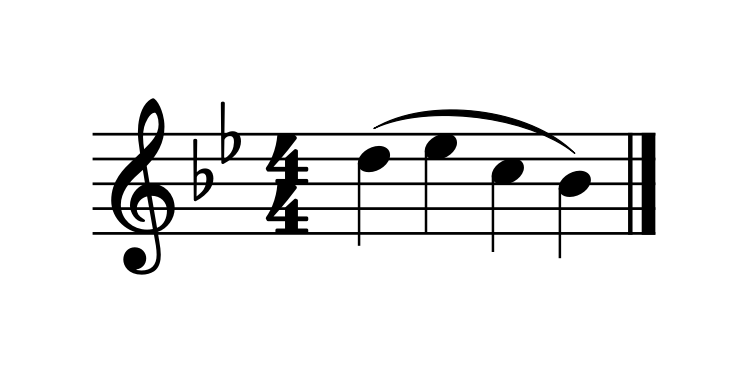
Left E-flat
The alternate version of this note is called Left E-flat, and is played with the left-hand pinky, like this:
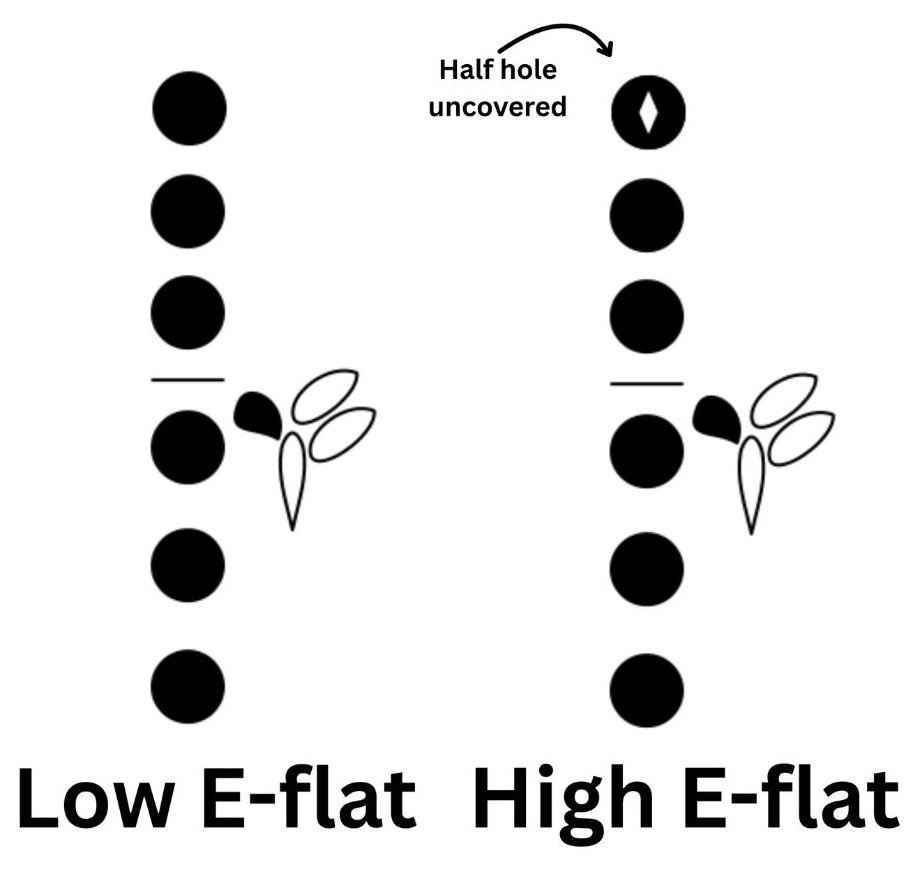
You will need to use Left E-flat whenever there is a D-flat (C-sharp) or Low C immediately before or after the E-flat. This is done to avoid the difficulty of sliding your right pinky finger from one key to another.
In this example, Left E-flat is needed because the right-hand pinky will be used to play the D-flat.
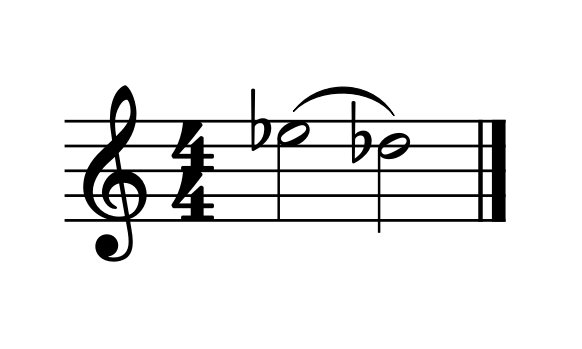
In this example, use Left E-flat so your right-hand pinky is able to play the Low C.
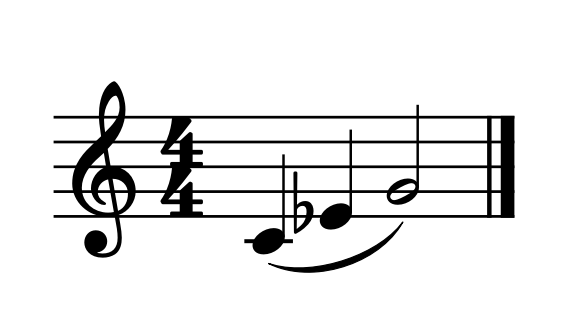
Any time that Left E-flat is required in the music, I like to mark the letter L marked above the note so I remember to use the right fingering. I encourage you to do the same.
Alternate A-flat
Although less common, there are also two ways to play A-flat. Regular A-flat is the most common one, and is played with the left-hand pinky:
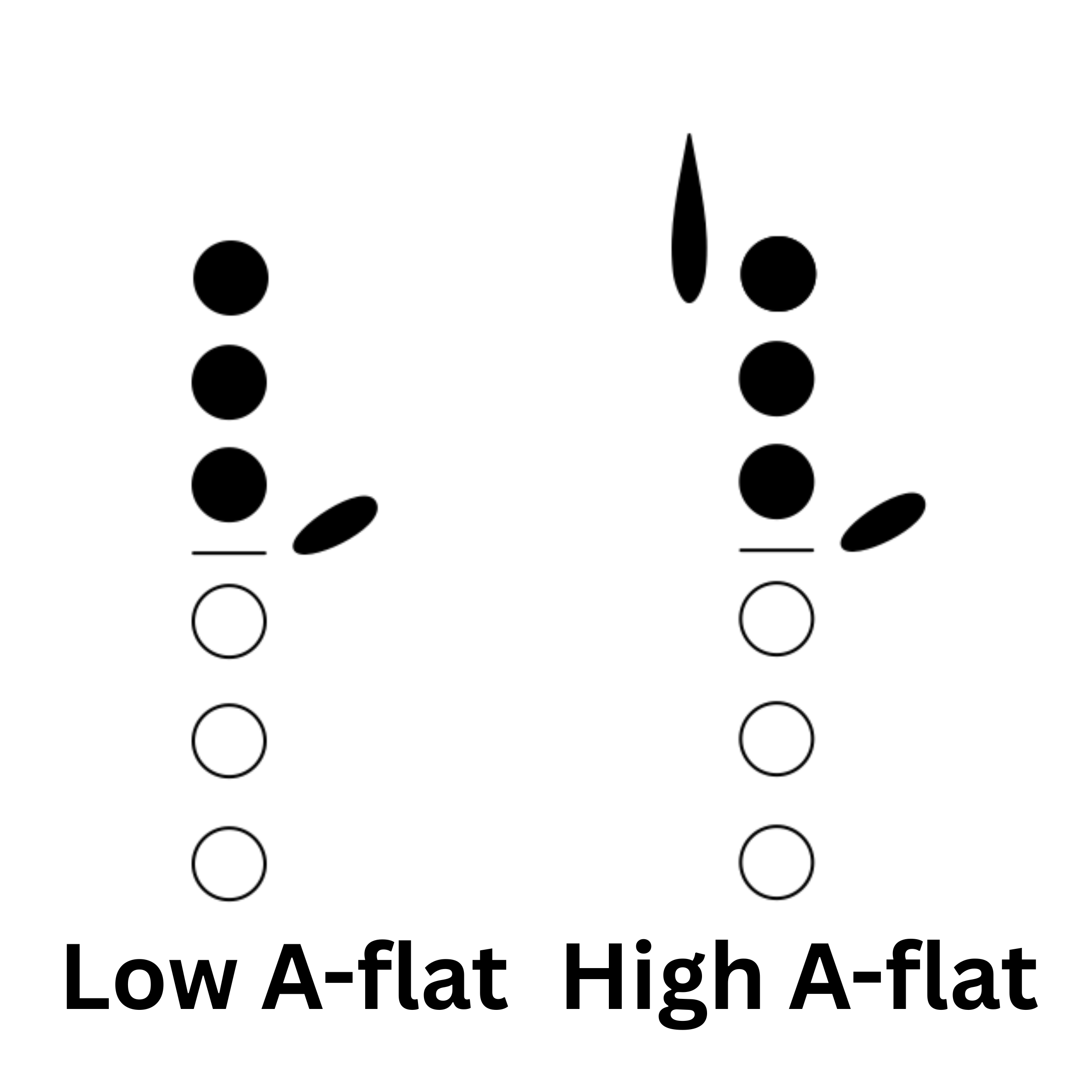
In this example, you can use the regular A-flat, as your left-hand pinky is not needed for the notes before or after the A-flat:
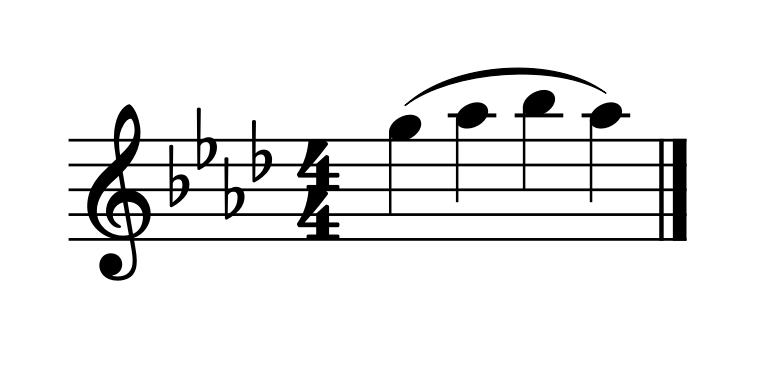
Occasionally, your left-hand pinky is needed for a note before or after an A-flat, such as Low B, Left F, or Left E-flat. In this case, you would need to use Alternate A-flat, which is played with the right-hand index finger:
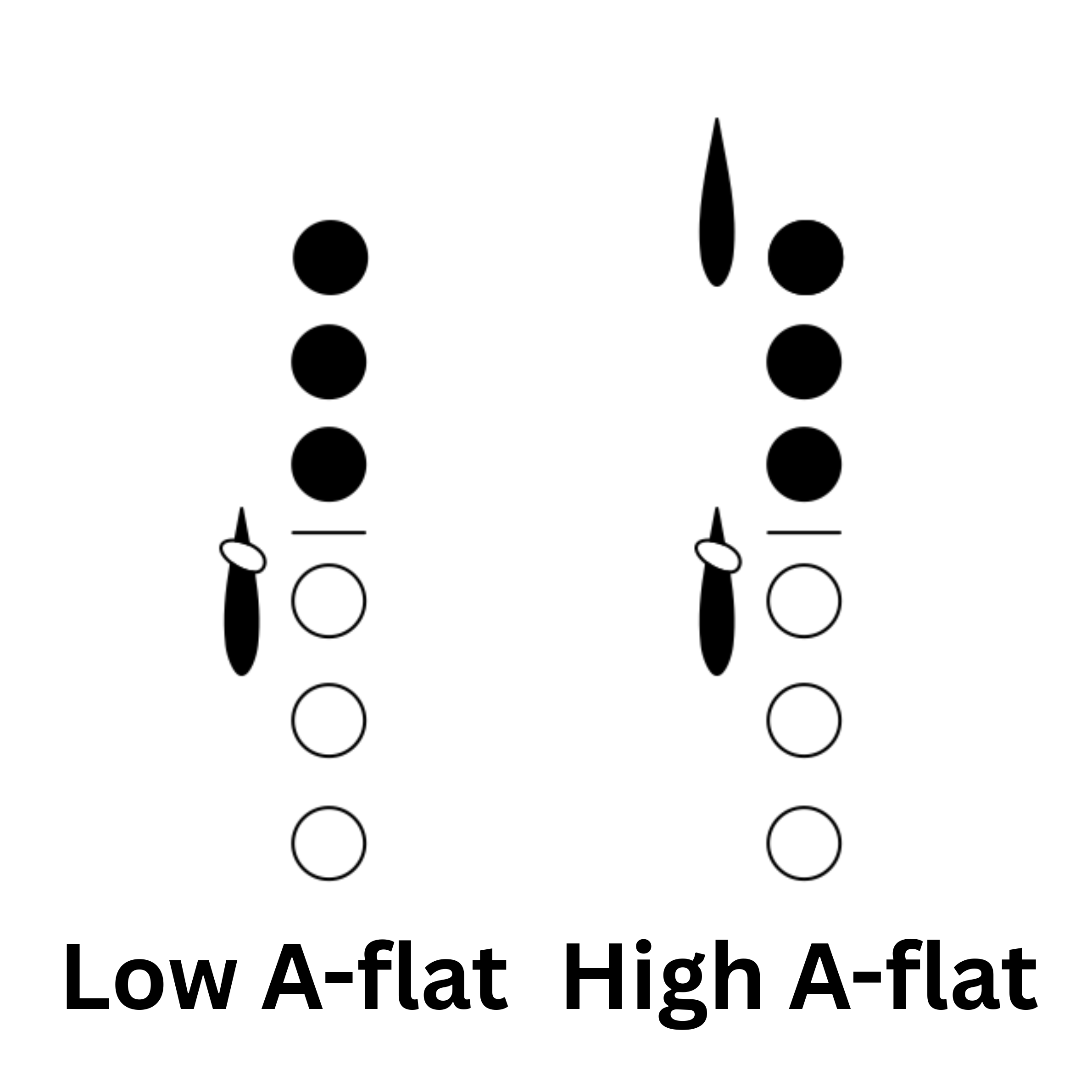
In the passage below, Alternate A-flat is needed. The Low C at the start requires that the E-flat be played as a Left E-flat, therefore requiring Alternate A-flat to follow. You can mark above the A-flat to remind yourself to use the alternate fingering. (As for the F in this example, using Alternate A-flat makes it possible to use any F fingering you would like, including Regular F, Forked F, or Left F!)

Another use for alternate A-flat:
If your pinky fingers are slow (like mine), you may find it difficult to trill from G to A-flat using the regular A-flat fingering. Instead, try trilling using the alternate A-flat fingering! Your index finger is probably stronger than your pinky and may be able to execute the trill faster and with more control.
How to play Low B-flat on the oboe
I saved the most interesting one for last! Whether or not your oboe has a Low B-flat key, you can still play a Low B-flat, and it will be fun either way.
If your oboe does have a low B-flat key, simply play the note as indicated in your fingering chart:

However, if you don’t have a low B-flat key, you can still play this note! First, line up the two holes in your bell to face left to right. Next, play a low B-natural:

Finally, cover the two holes in the bell with your knees, like this:
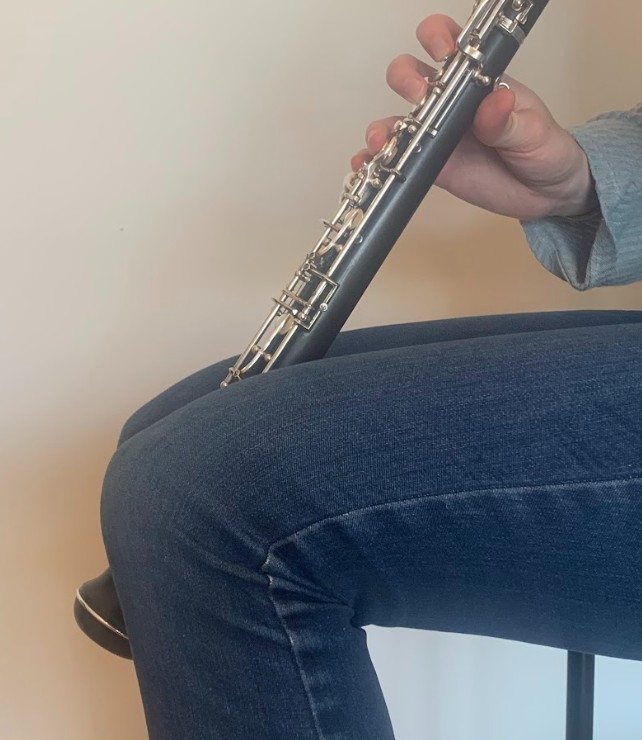
Who would have guessed there was a note on the oboe you could play with your knees? Share it with all your friends in band class!
Conclusion:
On the oboe, there are several options for how to play F, E-flat, A-flat, and low B-flat. I hope this guide empowers you to choose the best alternate fingering option for every situation!
Have a favourite alternate fingering hack you’d like to share? Let us know below!
